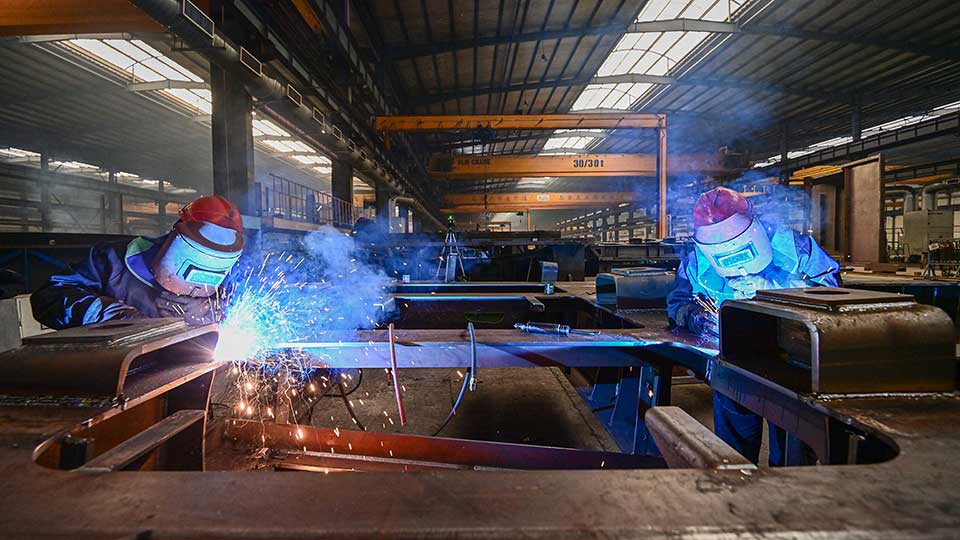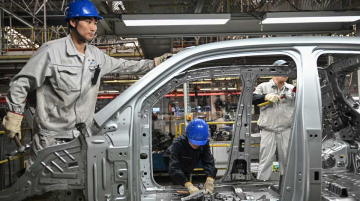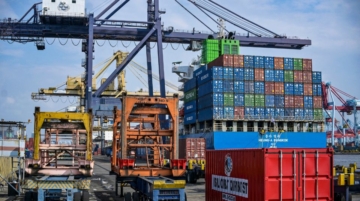
By Ian Coxhead and Varan Kitayaporn
China’s manufacturing-focused stimulus measures have accelerated the extension of its domestic supply chain and caused a surge of exports into world markets. These trends challenge industrial economies all over the world. The effects are felt especially strongly in Asia’s developing, middle-income economies.
In addition to geographic proximity, these countries are most closely connected to China as suppliers of intermediates and competitors in world markets for final products. Two other sets of policies in China create an asymmetry in the changes in the competitiveness of manufacturers and exporters in middle-income Asia. These are the dramatic increase in the share of tertiary-educated workers in China’s labor force and the high-tech and skill-intensive industrial promotion policies known as Made in China 2025.
The fraction of Chinese youth obtaining university degrees has increased for many reasons, but the rise was most dramatic in the decade following a 1999 policy change that relaxed university admission quotas. A growing population of skilled workers has greatly reduced the skill premium — the ratio of wages for university graduates to those of workers with lower qualifications — driving down labor costs in skill-intensive industries relative to manufacturing as a whole.
Alongside this change, Made in China 2025 is using subsidies to target high-tech industries. Competition among Chinese firms has ensured that the benefits of Made in China 2025 subsidies are passed down the domestic supply chain, reducing costs and raising international competitiveness across a broad range of sectors.
China’s prominence in global trade and the size of these domestic changes ensure that no economy is unaffected. Industrializing middle-income economies will see Made in China 2025 policies alter their existing pattern of production and trade, with longer-term changes affecting their future growth and development prospects.
The surge in China’s manufactured exports has reduced competitiveness almost across the board for countries whose factor endowments lead them to produce similar goods. The asymmetric effects of China’s labor force upskilling and support for its high-tech manufacturing lower competitiveness even faster in the most skill-intensive sectors of similar economies — an effect exacerbated by the slowing of intermediate import demand by Chinese firms.
The combination of faster manufacturing growth in China and slower growth elsewhere is causing comparative advantage — and perhaps also employment — in middle-income countries to pivot back towards primary sectors such as agriculture, forestry, and mineral extraction. The direction of change is opposite to that targeted by policymakers and prescribed by economists for sustained, dynamic growth.
The asymmetric sectoral trends can be discovered in the data. Counterfactual simulations with a global trade model predict how China’s educational development and industrial policy measures offset other sources of growth. The model predicts that due to these measures alone, China’s exports of electronics and electrical equipment will increase by 12.7 percent and 53.9 percent, respectively, over the decade 2015–25. At the same time, Thailand’s exports of those goods are predicted to decline by 22.67 percent and 12.69 percent, and agricultural exports rise by 27.21 percent. Other middle-income countries show consistent patterns of sectoral export change with similar magnitudes.
The longer-term implication of these changes is equally serious. Having increased the skill-intensity of its own labour force and product mix, China is exporting the decline in its skill premium to global labour markets.
This notably affects countries whose skill-intensive industries are most vulnerable to Chinese competition and whose primary sectors are most responsive to relative input costs and output prices. As their skill-intensive industries decline — in a relative, if not absolute sense — demand for skilled workers grows less quickly than that for blue-collar workers. Model predictions for Thailand indicate a 0.54 percentage point drop, about 6 per cent of the typical returns to education in developing countries.
Why does this matter? The skill premium not only measures relative labour costs, it also indicates expected gross returns to educational investments beyond compulsory schooling. A lower skill premium can discourage young people from pursuing further education instead of immediately entering the job market.
In Thailand, a 1 percentage point decline in the country’s skill premium contributes to a 1.9 percent drop in the educational enrolment rate of 15–23-year-olds. In the scenario where China increases its skilled labor endowment and subsidizes its skill-intensive industries, the 0.54 percentage point drop in Thailand’s skill premium translates to a decline in the educational enrolment rate of just over 1 percent.
Any trend away from greater investment in human capital is also at odds with policy goals and prescriptions for successful development. As concerns about the costs and benefits of non-compulsory education are strongest for lower-income households, lower returns to education may exacerbate existing gaps in educational attainment and intergenerational economic mobility.
While the world’s attention is focused on China’s trade relations with the United States and other advanced economies, it is perhaps middle-income countries whose futures are most at risk. The changes in global markets due to China’s development path and policies demand greater effort by affected countries to ensure that their own educational systems are capable of sustaining increases in skilled labor endowments.
To the extent that China raises income from exports of primary and extractive industries, affected countries should aim to leverage this windfall to raise the affordability of education among their credit-constrained populations and promote schooling and skill accumulation. To ensure that university graduates find gainful employment, countries should also aim to raise returns to capital invested in more skill-intensive industries and in the knowledge base from which their dynamism is derived.
Picking winners among skill-intensive industries is a futile approach for small economies without global market power. But fostering across-the-board productivity growth and competitiveness will maximise their chances of finding profitable niches within an increasingly fragmented global manufacturing production system.
Ian Coxhead is a Senior Research Fellow at the Institute of Developing Economies, Japan External Trade Organization (IDE-JETRO).
Varan Kitayaporn is a Visiting Clinical Assistant Professor at New York University.
This article was originally published on the East Asia Forum website and was published here under Creative Commons Attribution-NonCommercial-NoDerivs 4.0 International license.









